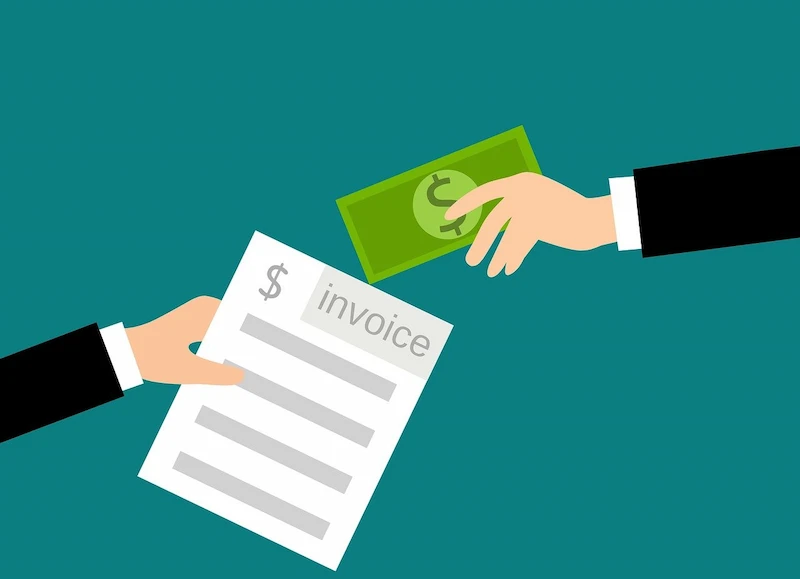Table of Contents
Invoicing may seem like a simple and straightforward task, but for many businesses, it can quickly become one of the most challenging aspects of running their operations. From small startups to large corporations, invoicing has been a constant source of frustration and delayed payments.
Customers expect accuracy, timeliness, and convenience when it comes to paying for goods or services. However, with multiple clients and varying payment terms, it can be overwhelming for businesses to keep up with invoicing efficiently.
In this blog post, we will explore why invoicing is such a challenge for many businesses and offer some solutions that can help streamline the process and improve cash flow management. Let’s get started.
Lack of Automation
One of the main reasons invoicing can be a challenge for businesses is due to the lack of automation in their processes. Numerous businesses continue to use outdated methods like paper invoices, spreadsheets, and manual data entry. These outdated practices are not only time-consuming but also prone to errors. Without automated systems in place, businesses may struggle with tracking payments and managing accounts receivable efficiently.
Investing in an automated invoicing system can greatly improve accuracy and timeliness while reducing the burden on employees. As highlighted by experts at Prime Software, an invoice program can automatically generate and send invoices, track payments, and even provide real-time reporting on outstanding balances. By automating the invoicing process, businesses can save time and resources while also improving customer satisfaction.
Manual Errors
Another common challenge faced by businesses when it comes to invoicing is manual errors. This can happen due to the use of outdated methods or human mistakes during data entry and calculations. Even a small error such as a missing digit or incorrect date can lead to major discrepancies in invoices, causing delays in payments and frustrating customers.
To avoid manual errors, businesses should invest in automation or utilize invoicing software that can automatically generate invoices and keep track of data accurately. Additionally, implementing double-checking processes and having a dedicated employee responsible for reviewing invoices can also help catch any mistakes before they reach the customer.
Complex Invoicing Requirements
Invoicing can be a challenge for businesses when there are complex requirements involved. This may include different tax rates, discounts, or multiple items on a single invoice. With manual invoicing processes, it can be difficult to keep track of these various requirements and ensure accuracy.
To overcome this challenge, businesses can invest in software that allows for customization and flexible invoicing options. This way, your business can easily adjust invoices according to specific customer needs while still maintaining accuracy and consistency. Additionally, educating employees on the necessary steps and requirements for creating invoices can also help streamline the process and avoid errors.
Multiple Payment Terms and Methods
Gone are the days when customers only paid with cash or check. With the rise of technology, there are now multiple payment methods available such as credit cards, online transfers, and mobile wallets. This can be a challenge for businesses when it comes to managing different payment terms and ensuring timely payments.
To address this issue, businesses can clearly communicate their preferred payment methods and terms to customers. Additionally, utilizing invoicing software that allows for easy integration with different payment platforms can help streamline the process and make it more convenient for both parties. Offering incentives for early payments or implementing late fees can also encourage timely payments from customers.
Time-Consuming Process
Invoicing is not a one-time task; it is an ongoing process that can take up a significant amount of time and resources for businesses. From creating invoices, sending them out, tracking payments, and following up on overdue accounts, it can be a never-ending cycle. This can pose significant difficulties for small businesses that have limited resources and workforce.
To alleviate the burden of invoicing, businesses can invest in automation or utilize software that allows for batch invoicing and automated reminders for late payments. Outsourcing to a third-party service provider may also be a viable option for some businesses.
Customer Disputes and Delays
Despite best efforts from businesses, customer disputes and delays in payments are bound to happen at some point. This can be a major challenge for businesses, as it not only affects cash flow but also relationships with clients.
To address this issue, businesses should have clear and transparent terms and policies in place regarding invoicing and payment procedures. It is essential to communicate these terms to customers before providing goods or services and keep documentation of any changes made. In the case of disputes, prompt communication and resolution can help avoid delays in payments.
Poor Communication with Clients
Effective communication is crucial in all aspects of business, including invoicing. However, poor communication can lead to misunderstandings and delays in payments. For example, if there are any changes to invoice details or payment terms, failure to communicate this information clearly can cause confusion and disputes.
To improve communication with clients, businesses should have a dedicated point of contact for invoicing-related queries and concerns. Utilizing technology such as email and messaging can also help ensure timely and clear communication. Additionally, setting up regular meetings or check-ins with clients can help maintain positive relationships and address any issues before they escalate.
Limited Resources and Manpower

Lastly, invoicing can be a challenge due to limited resources and manpower in small businesses. With employees often wearing multiple hats, it may be challenging to find the time and expertise needed for efficient invoicing processes. This can result in delayed payments, and errors, and ultimately affect cash flow.
To address this challenge, businesses can consider outsourcing invoicing tasks or investing in software that streamlines the process. Utilizing cloud-based systems can also allow for easier collaboration and access to invoicing information from anywhere. Additionally, businesses should prioritize regular training and education for employees handling invoicing tasks to ensure accuracy and efficiency.
Invoicing can be a major challenge for many businesses due to various factors such as lack of automation, manual errors, complex requirements, multiple payment terms and methods, time-consuming processes, customer disputes and delays, poor communication with clients, and limited resources and manpower. However, by identifying these challenges and implementing appropriate solutions such as automation technology and effective communication strategies, businesses can streamline their invoicing processes and improve cash flow management. It is essential for businesses to prioritize efficient invoicing practices to maintain positive relationships with clients and ensure timely payments for goods or services provided.
Want to explore something different? The Importance of Hiring a Lawyer in a Wrongful Death Case

